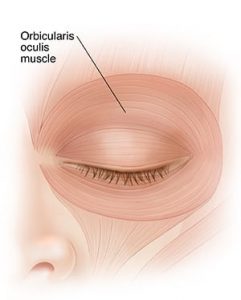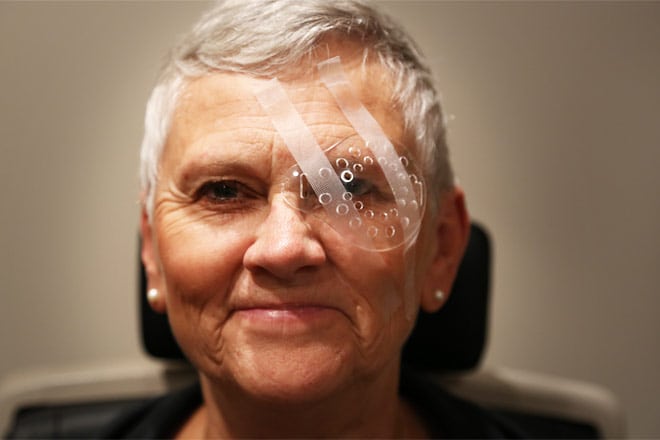Eyelid twitching–are spasms an indicator of a more serious condition?
Patients often complain about eyelid twitching and sometimes worry that their symptoms might be an indication of a more threatening condition. While the sensation of eyelid spasms are occasionally part of certain uncommon movement disorders such as hemifacial spasms, benign essential blepharospasm, Meige’s syndrome or a consequence of irregular healing after a facial nerve injury or Bell’s Palsy, they are most often simply a common condition known as benign eyelid fasciculations.
Benign eyelid fasciculations are involuntary, usually brief, repetitive contractions of part of the circular muscle that surrounds the eye (Orbicularis oculis muscle) that are not associated  with any disease. While the contractions are annoying, they are not typically described as painful, do not involve or spread to other areas of the face, and are not associated with loss of vision. If the contractions are in the superficial layers of the muscle, they can be visible on the skin surface. If they involve deeper layers, they can be felt by the patient, but the eyelid twitching is not visible. The spasms, though individually brief, can repeat many times over the course of several days or even persist for several weeks. They then typically resolved abruptly without any treatment, sometimes only to reappear a few weeks later in a slightly different location around the eye.
with any disease. While the contractions are annoying, they are not typically described as painful, do not involve or spread to other areas of the face, and are not associated with loss of vision. If the contractions are in the superficial layers of the muscle, they can be visible on the skin surface. If they involve deeper layers, they can be felt by the patient, but the eyelid twitching is not visible. The spasms, though individually brief, can repeat many times over the course of several days or even persist for several weeks. They then typically resolved abruptly without any treatment, sometimes only to reappear a few weeks later in a slightly different location around the eye.
The spasms bother some patients more than others, but reassurance is the only treatment usually needed. Fortunately, the spasms eventually vanish as mysteriously as they began, much to the relief of the weary patient. Experts and researchers do not know why the circular muscle surrounding the eye seems to be prone to these involuntary contractions and are not certain of the underlying cause of benign eyelid fasciculations, but all agree that they are not harmful.
If you are worried that your eyelid twitching might be an indicator of another more threatening eye lid disorder or need some reassurance, an ophthalmologist can determine if the spasms are benign eyelid fasciculations or one of the other more serious eye movement disorders. These more serious conditions are authentic movement disorders, may have an underlying cause and do not usually resolve spontaneously without treatment. Treatment of these more serious conditions usually involves administration of Botox injections.
Next month, the blog will explore the various uses and administration of Botox.






 ANNOUNCING UPDATES TO OUR COVID-19 SAFETY PROTOCOLS
ANNOUNCING UPDATES TO OUR COVID-19 SAFETY PROTOCOLS